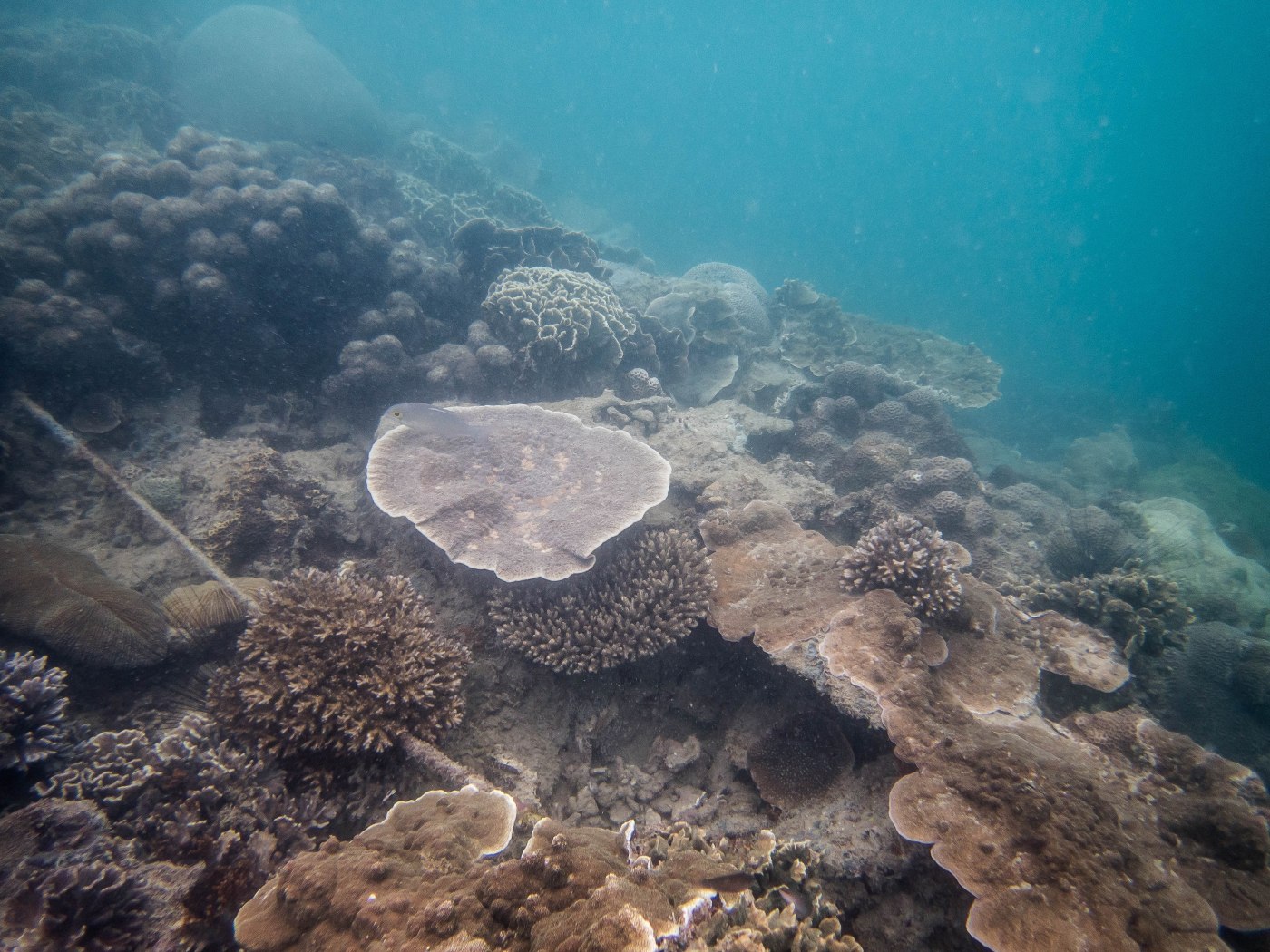April was really exciting for me this year…my first time going out to catch a coral spawning event, and what’s more right here in Singapore.
What’s coral spawning you might ask?
Coral spawning events are the biggest party of the year for a reef. Corals reproduce, fish get a buffet of tasty eggs and sperm so everyone is happy. In Singapore, corals usually spawn a few days after the full moon. Different locations spawn at slightly different times. This year, Tioman spawned on the same day of the full moon, just a few days before our spawning was expected to start. This is the gist of what happens:
First, corals start making sperm and eggs internally. Then, they spawn by releasing egg and sperm bundles into the water. Once fertilization takes place, coral embryos enter their only planktonic stage in life. This can be for anywhere between three days to a few weeks. If they can’t find a spot to settle, most will perish within 3 months. It’s a time for them to roam around and travel before having to get tied down with the responsibilities of becoming an adult. I’m joking, perhaps that’s just something some of us are coming to terms with now. Coral larvae are called planula, and they search for a suitable substrate to settle on where they will develop into a polyp. That’s the teeniest little spot of coral that will divide or grow into multiple polyps and the eventual large colonies we’re familiar with.
I was lucky to have the chance to go with NParks for their coral spawning survey at Raffles Lighthouse (thanks Karenne and Jeff!) on the 22nd of April 2019, and a second time with some of the Hantu Bloggers to Pulau Hantu (Thanks Min Hui!) on the 24th of April 2019 as well. Before the spawning event, Karenne gave a really fascinating talk about coral spawning and what to look out for so I thought this post might help record some of what I’ve learnt from her.
According to Karenne, the process of gametogenesis, when corals produce their eggs and sperm usually begin around August to September in Singapore, and takes around 6-8 months before the spawning event. Karenne told us how to look out for different signs of spawning, gave us tips on which corals to look out for at what time and which areas to dive at.
It was my first time at Raffles Lighthouse and when I first looked into the water I really couldn’t believe my eyes! There was just so much coral everywhere, the visibility was unlike anything else I’ve experienced in Singapore. It was around 8m perhaps? Its was unreal. I think Raffles Lighthouse might now be my favourite dive site in Singapore. However, one reason why this reef might be so pristine is because access to Raffles is quite limited unless you have a research permit or if you are conducting surveys with NParks.
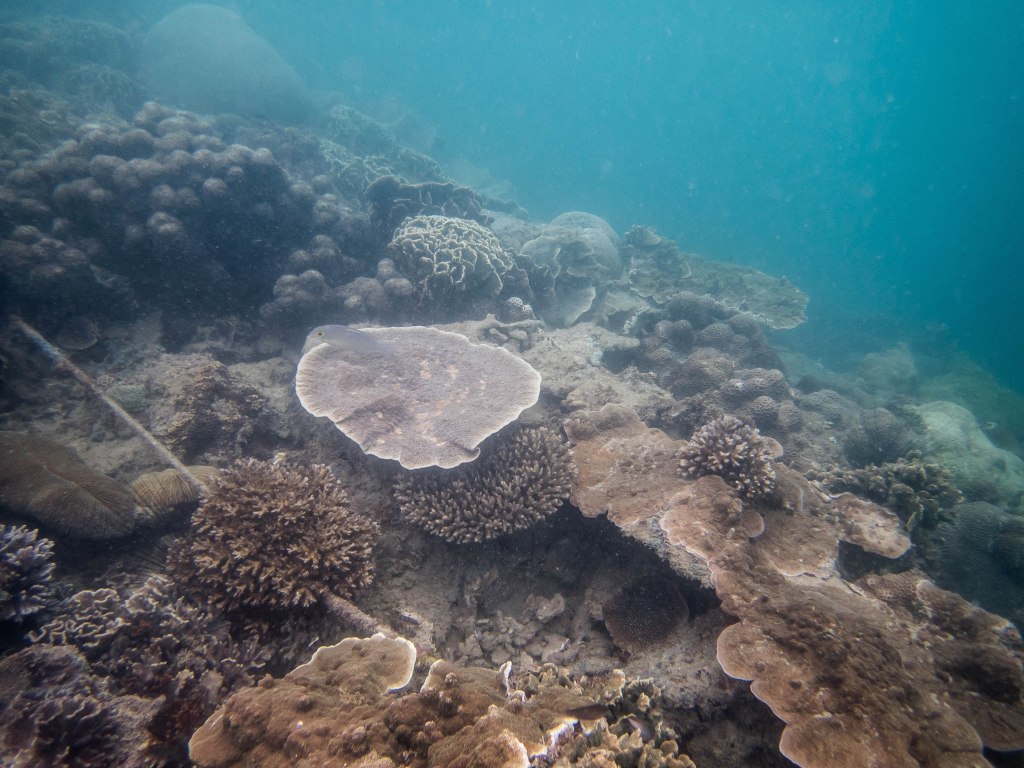
We each divided the surveys among ourselves. Some surveyed fish species, others did invertebrates and my group recorded corals along a Line Intercept Transect. This involved estimating the type of cover along the seafloor and identifying different types of coral. More on different types of coral reef survey methods here. We managed to complete the surveys within an hour and then it was time to start the search proper. We were rewarded with our hard work with so many beautiful creatures on the reef at Raffles. Let’s start with some photos of corals.

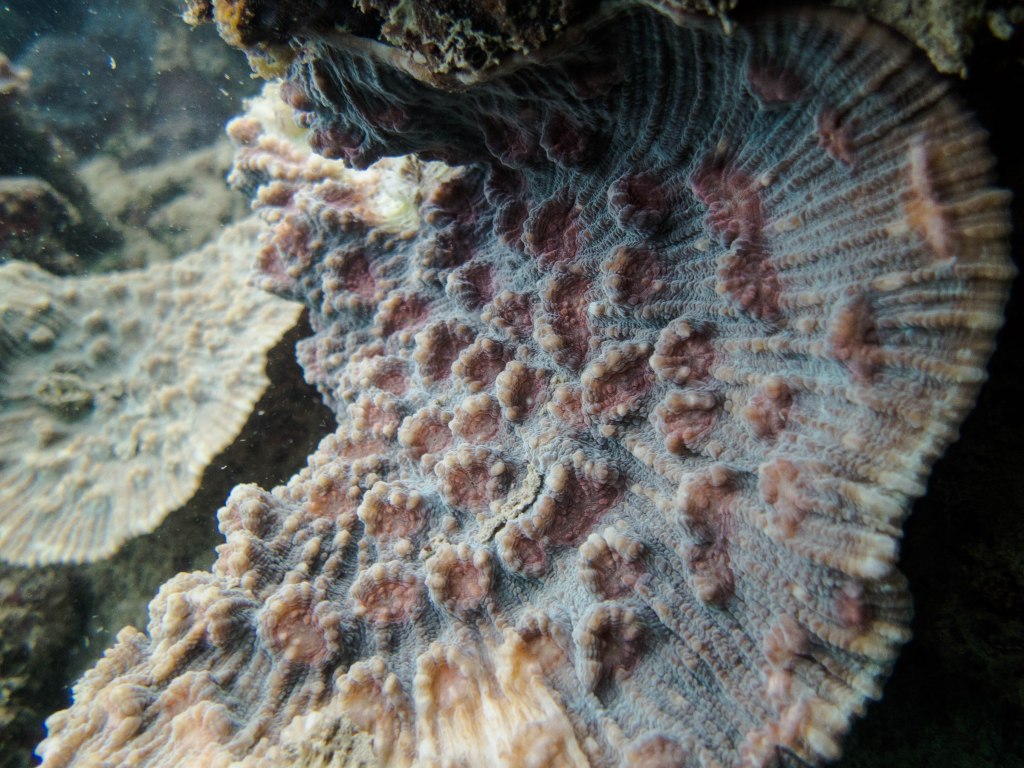
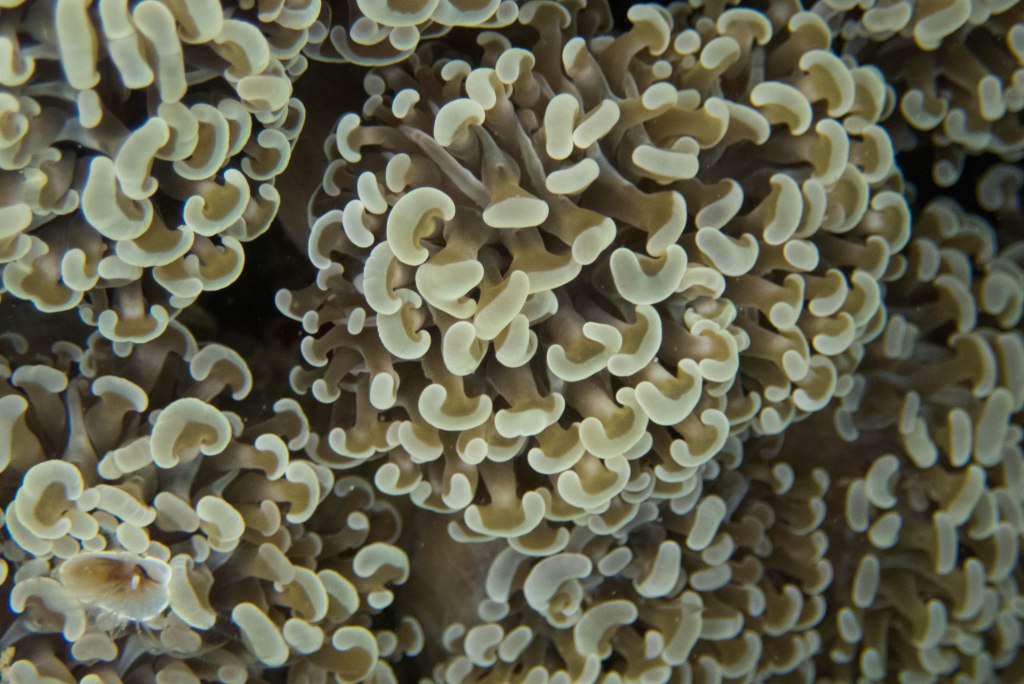


Apart from corals there was also quite a few fish we spotted as the sky turned darker.


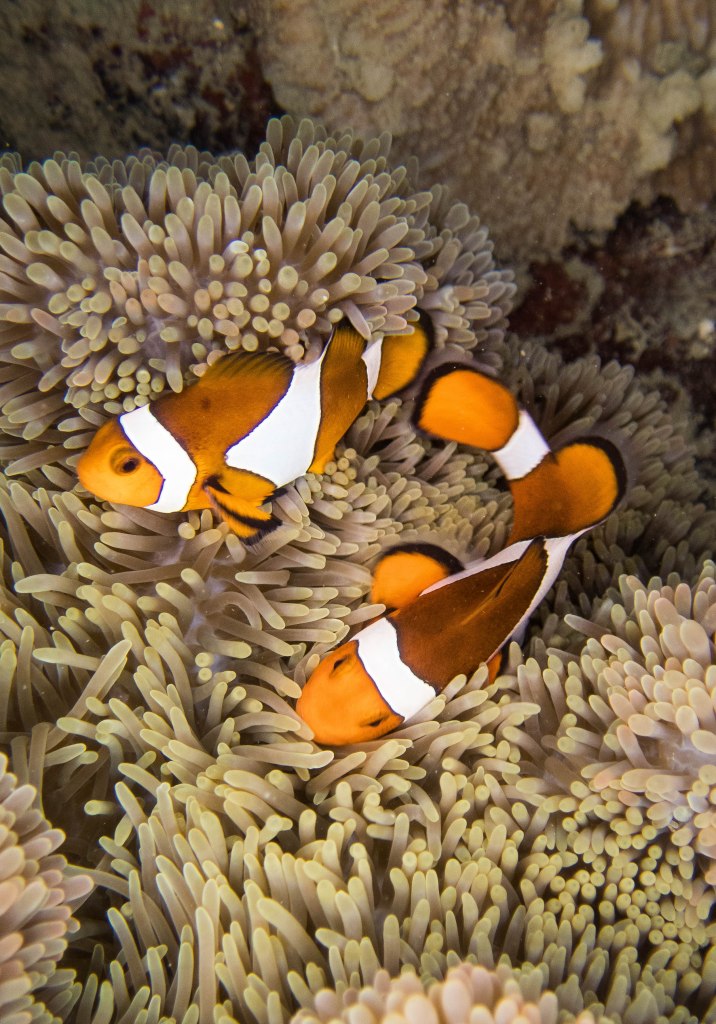
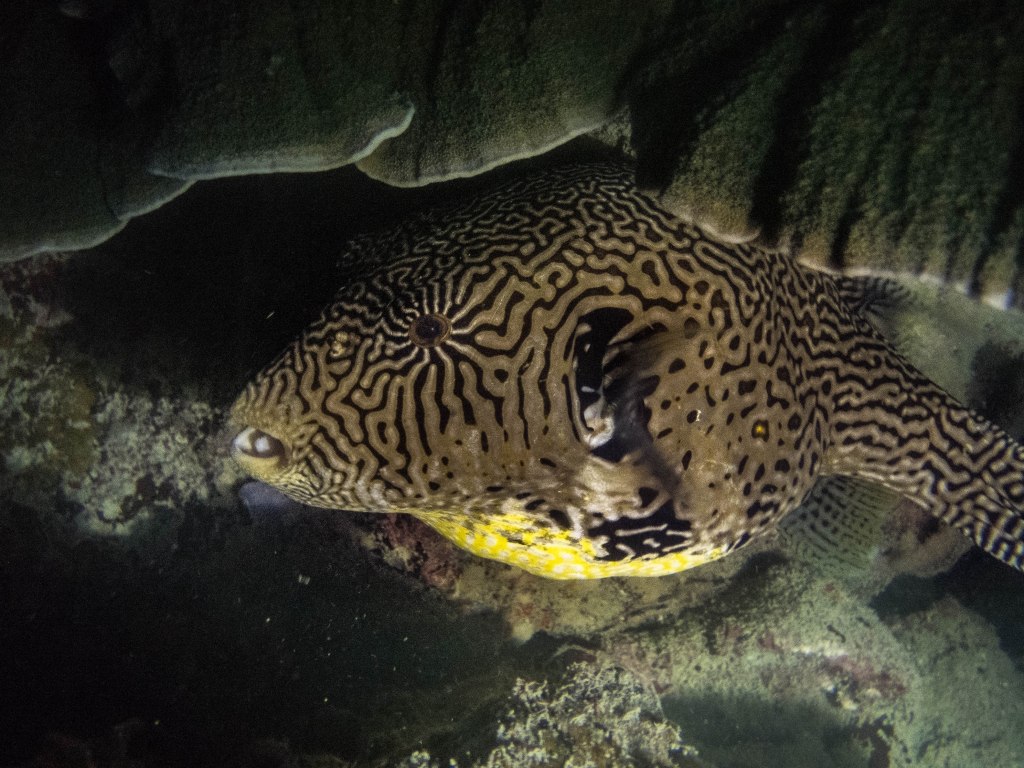

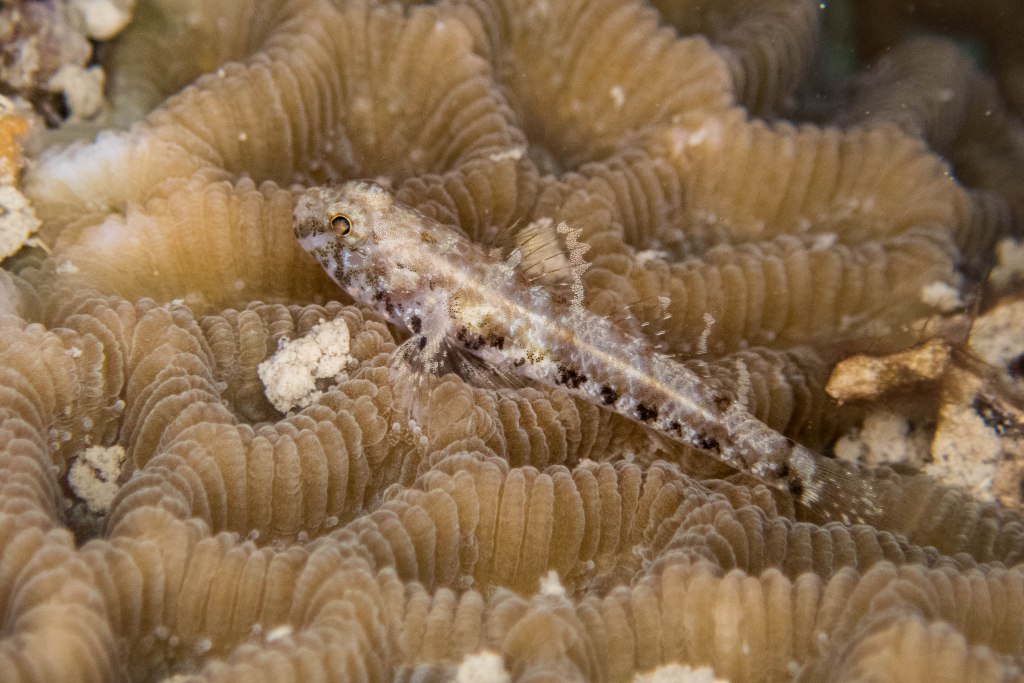
And now for some cute invertebrates! We found loads of stuff, from tiny little nudibranchs that Nick always has a sharp eye for, to crabs, clams, urchins and more!




Soon enough, the excitement I had at diving a new site in Singapore seemed to die down a little. After almost two and a half hours in the water, my buddy Nick and I still couldn’t find any spawning corals. Even with all of Karenne’s tips to spot coral spawning underwater, it was way trickier than I thought. I tried to console myself that it was still one of the best dives I’ve had in Singapore but couldn’t help feeling defeated. Back on the boat, I could only listen rather wistfully to Karenne who not only saw a turtle and shark but also found a few spawning corals. There’s definitely skill and luck involved when it comes to looking for these things! It also turns out that the spawning event might be starting a bit later this year. Everyone was worried because climate change can delay or alter coral spawning behaviour so I had my fingers crossed that it just wasn’t the right time yet.
Undeterred, my second attempt was at Pulau Hantu, and this time I knew we had to find them somehow. My buddy Keith and I stayed near the surface where there was the highest density of corals along the reef crest. As the tide was quite low, I found myself within one to two meters of the surface throughout our dive. The waves kept me bobbing up and down continuously, making it even more challenging to scrutinise each coral colony. Also, the visibility at Hantu was a lot lower than Raffles Lighthouse, but it was clear that the corals were all hungry and feasting on plankton.
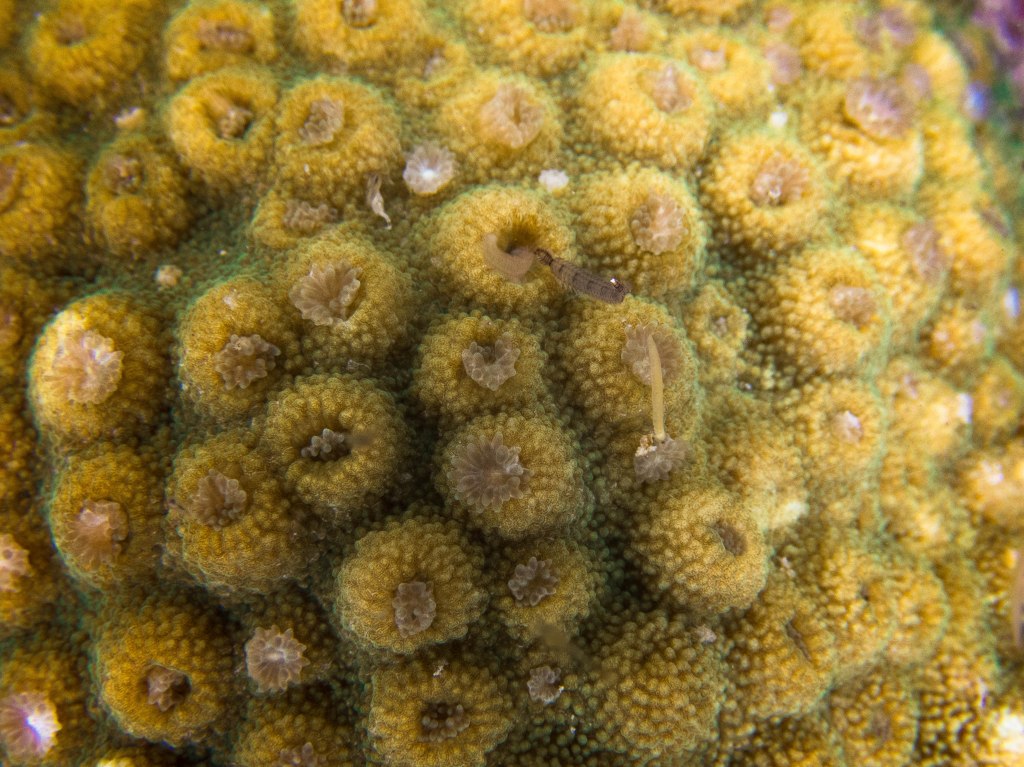
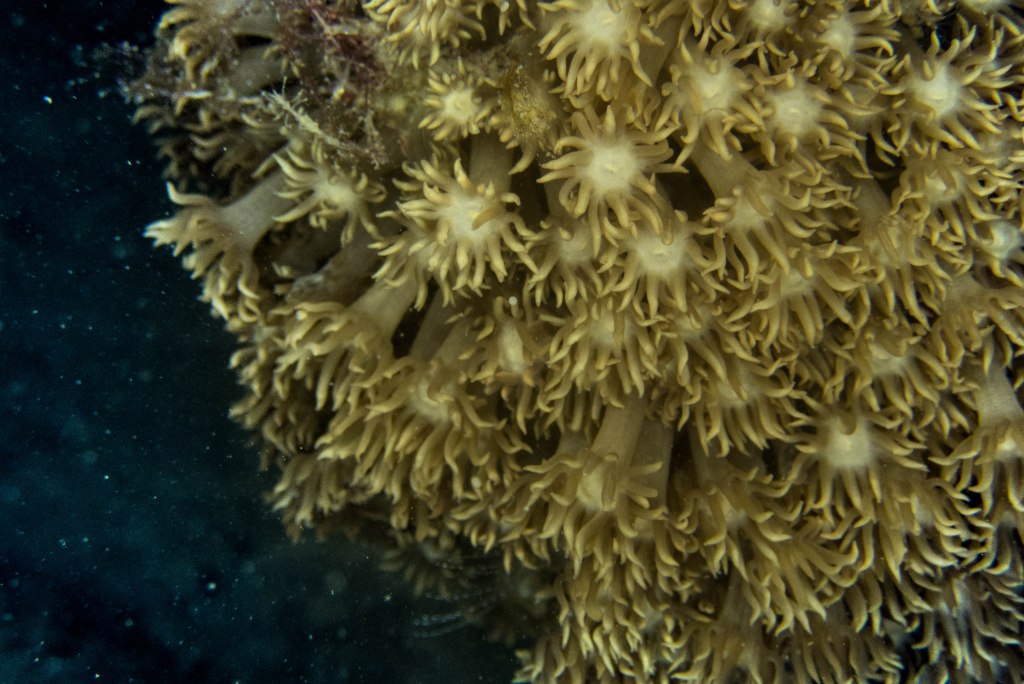


Before long, I get a signal from Keith. He’s found it! Relieved that our efforts were not in vain, I spend several minutes just watching each small pink bundle pop out of the coral. They rise slowly like bubbles to the surface. Karenne explained that the bundles usually have high lipid content that are less dense than water, so that a slick of coral sperm and eggs usually coats the sea surface after a productive spawning event.
More photos of the same colony here too!

We decided to venture deeper looking for more corals. Again, Keith makes another incredible find. “Turtle!”, he signs to me as a huge shadow looms closer. Chuckling underwater, I try to quickly take a couple of photos without blinding the turtle with our lights for too long.
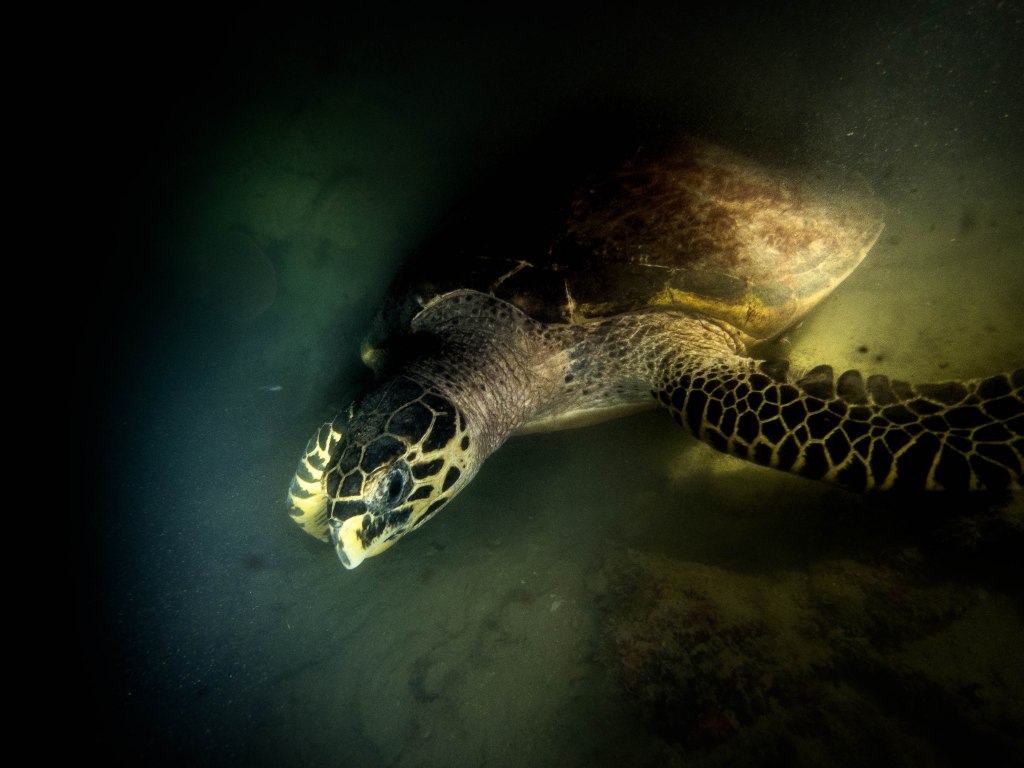
Happy that I was able to see what I came here for, but before long my light had gone out and the rest of the corals that we found spawning will I guess have to just stay in my memory. I wish I got better photos but I guess these will have to do for now. Check out more photos taken by other marine biologists and some of my friends too. Some nice shots taken by Chay Hoon, Nick and Min Hui from the Hantu Bloggers and Lisa Lim.
